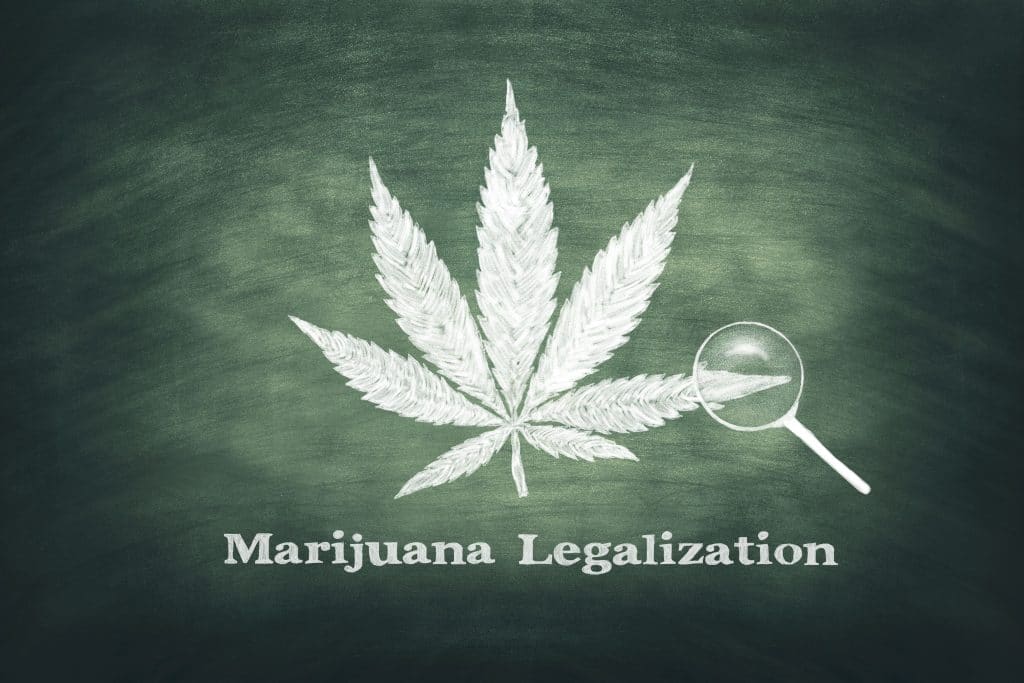Well before legalizations I was smoking weed, and so was a very large part of the population I came into contact with; though its illegal status meant less admitting to this. In fact, it’s been the most popular drug for so long, it’s funny to see research talking about it like a new trend. People have always been smoking weed, but now that its more socially acceptable, its okay to talk about it. So, to give an idea of who is smoking weed in the US (now that people are being more open), here’s some info to provide new insights, from both Gallup and the government.
Where is this data coming from?
Before getting into the numbers, let’s first examine where the following information is coming from. It’s great to know that a lot of people smoke, but when it comes to informational breakdowns, it requires a lot of information collection. One of the biggest organizations to collect and publish data on consumer opinions, is the company Gallup.
You’ve probably heard the term ‘Gallup poll’, because they’re used for all kinds of data collection, and get published frequently to help shed light on a subject for the general public. Gallup polls are conducted through the US analytics company Gallup, Inc., which hails out of Washington, DC. Gallup conducts all sorts of opinion polls, both in the US, and abroad.
The polls are all carried out via telephone interviews. The numbers called create random samples, and any number with a working exchange can be used, including unlisted numbers. As with any poll, it’s hard to imagine they’ll ever be 100% right on, but have through the years provided a level of consistency in accuracy that makes them useful tools for gauging public opinion.
Hey there, thanks for joining us. Never fall behind by signing up for our Cannadelics Weekly Newsletter, and also gain access to some pretty sweet deals on cannabis flowers, vapes, edibles, smoking equipment, cannabinoid compounds, and so, so, so much more. Here’s to getting baked responsibly!
It should be remembered, however, that its easy to hang up on a person calling for a poll, and many people will simply never take part in one, while others relish the opportunity. Plus, plenty of people don’t answer calls they’re unfamiliar with; and some populations, like the homeless, are less likely to have a number at all. These surveys are useful, but only as good as who picks up and feels like responding.
However, Gallup polls are interesting because they’re not based on governments looking for information, and have more of an independent appeal. This can mean less slant in the outcome, and more reason for impartiality. Having said that, other organizations, including government organizations, also provide compiled data on topics like drug use.
Which is expected to provide a better answer? It’s hard to say. A lot of recent information comes from the Monitoring the Future panel study, which was conducted via the University of Michigan Institute for Social Research, and which received its funding through the National Institutes of Health’s NIDA, making it a government study. How does non-government Gallup data compare to the government version? Read on to find out.
Current Gallup data on who is smoking weed in the US
It’s easy to say, ‘everyone is doing it’, but that’s not true. And sometimes its nice to see an actual breakdown of exactly who is, and who isn’t (or, at least, as exact as possible). The first thing to know, is that the first time Gallup ever asked this question in the US, it was back in 1969, and at that time, only 4% admitted to having used marijuana. Now, this represents a possible limitation, in that at a time when there was a strong social stigma against it, it might have been harder to get people to be honest…even if it was anonymous polls.
What’re the most recent Gallup numbers? As of 2021, up to 49% of respondants said they’d used cannabis. Says director of U.S. social research for the company, Lydia Saad, “In the next few years, we should see that crossing 50 percent.”
What else has Gallup found about marijuana usage among Americans? Well for one thing, apparently if you’ve got a Masters degree, you’re only a third as likely to smoke marijuana a those who only have a standard college degree or less. And as it might seem obvious just by which states were the first to adopt recreational policies, democrats have shown to be twice as likely to toke up as republicans. In the same vein, those who see themselves as liberals, apparently use marijuana almost 4X as much as those who see themselves as conservatives.

Gallup polls also indicate that men have been more likely to use than women throughout the years. How much more? At apparently a nearly 2:1 ratio. However, this gap has steadily been closing in more recent years, and in the young adult category, it almost doesn’t exist at all anymore.
Gallup polls have shown another interesting point. While they look at opinion, they tend to also look at who has that opinion. What its polling shows, is that though some people (as much as 50%) still have a negative view on cannabis, that negative view comes primarily from those who don’t, and have often never, used it. Those who do use it see it as beneficial for both individuals and society (70% and 66% respectively).
Those who never used it, see it as beneficial on both those levels at only 35% and 27% respectively, with much higher numbers in the not-beneficial category (62% and 72% respectively). This says quite a bit about knowing the thing you’re making a judgment about, and how not knowing about something, can easily lead to fear of it.
Current Monitoring the Future Panel study info on who is smoking weed in the US
So we saw a little bit of what Gallup had to say, now what about what the government compiled? According to this data, about 2/5 of young adults say they use cannabis at least sometimes. Remember how it used to be mainly men smoking? Well, part of the rise, is the catching up of the female population. The young adult category is comprised of those 19-30, and the comparison comes from looking at 2021 data, next to data from both five and 10 years ago.
The data also points to a another interesting factor.Take Vermont, for example. When it comes to young adult users, you actually now have a greater number than non-users. As in, for the 19-30 category, more people in that location now use cannabis, than don’t use it. This is getting close to the case in Colorado, Oregon, and Washington, DC as well.
In terms of past-year, past-month and daily cannabis use (20+ occasions in past month), 2021 had the highest levels since the question began being looked into in 1988. Past month usage reached as high as 29%. Five years ago it was 21%, and 10 years ago it was 17%. In terms of daily use? 11% met the standard for 2021, whereas only 8% did five years ago, and 6% 10 years ago.

Another interesting factor? While alcohol continues to be the #1 drug of choice, it has steadily been going down in usage. This was seen in past-year, past-month, and daily drinking trends, which have all gone down in the last decade. This isn’t as clear cut as it sounds however, as high intensity drinking (10+ drinks in a row), has gone up. Does this indicate that party drinking is still a thing, while non-party drinking is growing less popular? Hard to say exactly. Just like its hard to say if this is directly correlated to rising cannabis use.
And another growing trend according to this data? The use of hallucinogens. According to the data, these numbers have also grown quite a bit in the last decade. The 2021 numbers show 8% for this category, up from 5% five years ago, and 3% 10 years ago. Should we expect these numbers to skyrocket up as well in the next few years, as more states legalize hallucinogenic drugs? Certainly seems like it with an Oregon legalization of magic mushrooms, access to MDMA and psilocybin in Connecticut, and a pre-emptive MDMA legalization in Colorado, along with a ballot measure for legal use of entheogenic plants.
Conclusion
Who is smoking weed in the US? Well, according to both Gallup and government data, a large and growing section of the population, particularly in the young adult category. Which is more accurate? It kind of doesn’t matter. The trend shows the same through both sets of data, with a general upward trajectory in overall usage. Imagine what these numbers will look like in another few years, especially considering five more states are up for legalizations this election season, including southern states which were previously holdouts.
Welcome all readers!! We thank you for making your way to Cannadelics.com; a premiere news platform focusing on the best in independent reporting for the cannabis and psychedelics spaces. Chill with us daily to stay on-top of everything going on, and sign up for our Cannadelics Weekly Newsletter, so you’re never late on getting a story.

